Joseph Curran Building / National Maritime Union Headquarters / Edward and Theresa O'Toole Medical Services Building
36 Seventh Avenue (between West 12th/13th Sts)
The Joseph Curran Building was built in 1963 as the headquarters for the National Maritime Union, which represented longshoreman and merchant sailors. It was designed by the New Orleans architect Albert C. Ledner and named after the union's founder and longtime president. The white facade and scalloped, cantilevered overhang was meant to conjure the image of an ocean voyage, with the glass brick base suggesting an urban aquarium.
The dramatic building (which incorporated a union hiring hall on the ground floor) made a dramatic impression in the architecture community and was one of a handful of fanciful designs that rebelled against Modernism's soon-to-be-ubiquitous glass-box aesthetic. By 1968, tours of the building were being offered because it drew so much attention. Ledner employed similar maritime motifs for the Seamen's Training School and Dormatory on 9th Avenue at 17th Street.
Little did the union realize that their best days were past. The advent of containerization in the 1950s would soon lead to radical changes in the way ports operated, including a movement of most New York port activity to newer, larger docks in New Jersey that could handle the new, large shipping containers. The union went through a succession of mergers and affiliations before finally becoming integrated into the Seafarers International Union in 2001. Curran himself came under fire for misappropriation of union funds and in the early 1970s was eased out of the organization he had built. In 1973, the building was sold to Saint Vincent Catholic Medical Center (which had a building across Seventh Avenue) for use as an outpatient clinic and office building. It was renamed the Edward and Theresa O'Toole Medical Services Building
A low-rise building in Manhattan is like catnip to developers and the hospital's filing for bankruptcy in 2005 made them especially amenable to suggestions for the capitalization on the value of their real estate. The resulting project (in partnership with the Rudin Organization) would involve demolition of the O'Toole Building and construction on the site of a new 21-story building (equivalent to 30-story height due to the high hospital ceilings) that would house the entire hospital. Then, the bonanza part for the developers would be the demolition of the disparate buildings that make up the St. Vincent's campus on the other side of Seventh Ave for replacement by a 21-story residential tower flanked by town houses - a visual middle-finger extended to the surrounding neighborhood. Despite vociferous community opposition and negative press, on October 28, 2008, the Landmarks Preservation Committee declined to offer landmark status to the building, paving the way for it's almost certain demise.
Mid-20th-century modernists buildings are the especially problematic for preservationists since they have not yet reached the 100-year threshold where objects become antiques with nostalgic value. Given the destructive disdain that mid 20th century developers had for the historically-important buildings of their time (think Penn Station), there is a certain schadenfreude to seeing these modernist exemplars come down. St. Vincent's has a legitimate need for a facilities upgrade and the exterior layout of the building (such as the surrounding rock garden) is a bit clumsy for a 21st century city and completely out of character with the neighborhood. But, modernist buildings like this represent a part of New York's architectural heritage that, once erased, will be forgotten - along with the lessons, both good and bad, that they have to teach.
For detailed historic info on the Curran Building, visit the International Working Party for Documentation and Conservations of Building Sites and Neighborhoods of the Modern Movement (docomomo.us)
The disparate buildings on the block bounded by 12/13th Streets and 6/7th Avenues are St. Vincent's main campus and are proposed for demolition and replacement with townhouses surrounding a 21-story residential tower.
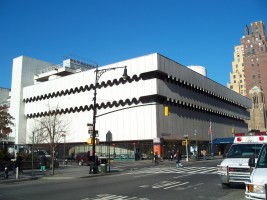
Curran Building, right
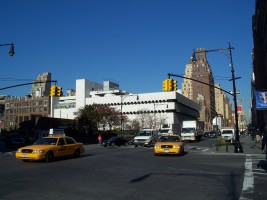
View from the south along Seventh Ave
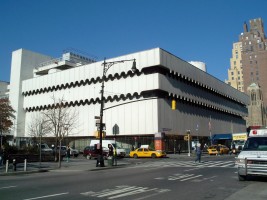
View from the southeast
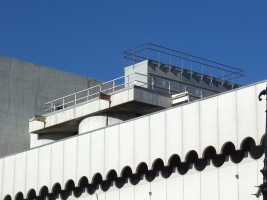
Roof platforms on the southern side
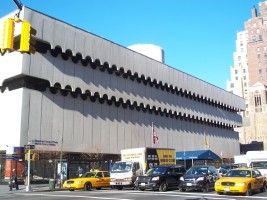
Eastern side of the building
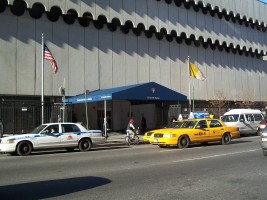
Seventh Avenue entrance
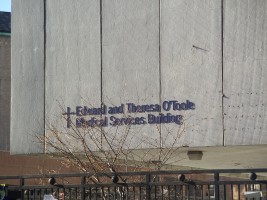
Building name on the southeast corner
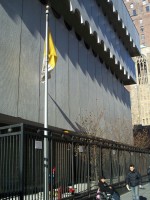
View of the northeast corner and overhang

AKC tribute to search and rescue dogs

Fence sign dissuading deposit of trash
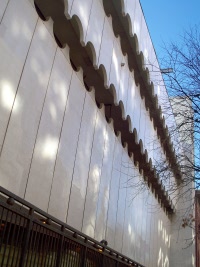
North side of the building
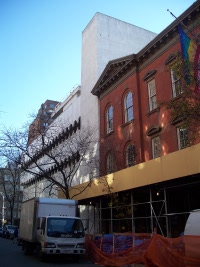
North side of the building with neighboring row house
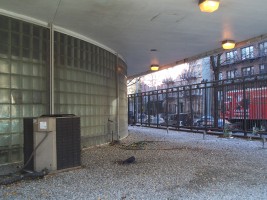
NE corner - rock garden and glass brick windows
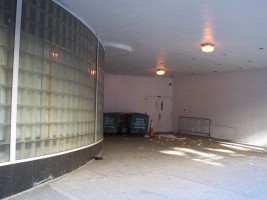
Service entrance on the north side of the building
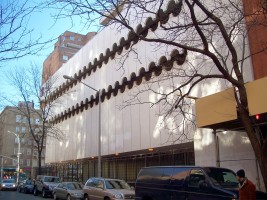
North side of the building viewed from the northwest
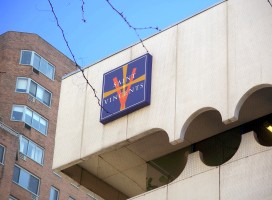
St. Vincent's logo on the northeast corner of the building
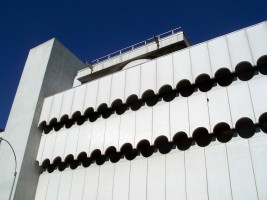
South wall of the building
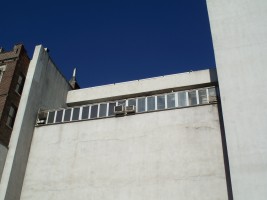
Decrepit windows on the southwest corner of the building
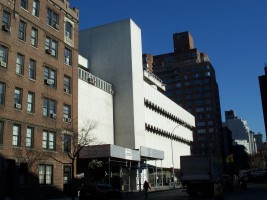
South side of the building viewed from the southwest

Parking garage entrance - southwest corner of the building
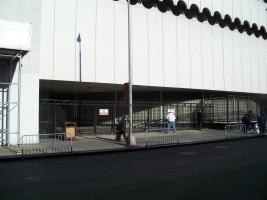
Base of south side of the building

Closeup of white tile exterior

Base of building on the southeast corner
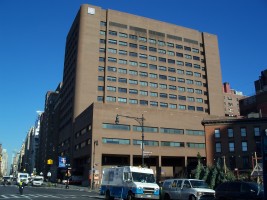
Main St. Vincent's 1980s building on the other side of Seventh Ave
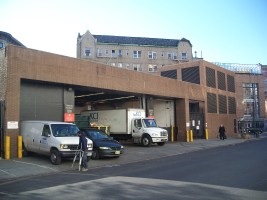
1980's era service building between 11th and 12th streets
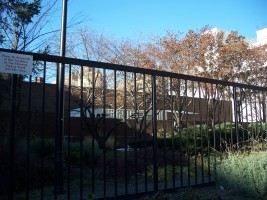
Service building

Service building
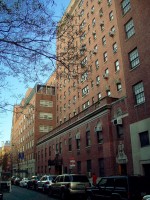
St. Vincent's buildings on 13th St
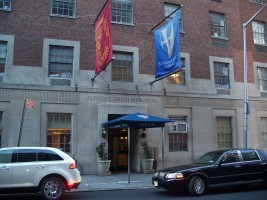
Alfred E. Smith Memorial

1952 building on 13th St
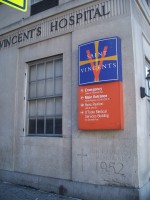
1952 building cornerstone
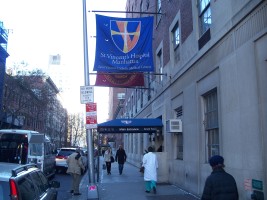
1952 building